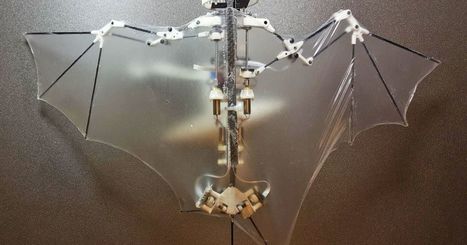"Robotic birds and winged insects are relatively easy to create, but with over 40 joints in their wings, bats offer a new level of intricacy. Or, as Caltech professor and Jet Propulsion Laboratory researcher Soon-Jo Chung put it during a press conference, "bat flight is the holy grail of aerial robotics. [...] By simplifying that wing structure into just nine key joints covered by a flexible membrane, however, the team successfully created the first Bat Bot. Built from carbon fiber bones and 3D-printed socket joints, Bat Bot weighs just 93 grams and the silicon-based wing membrane is only 56 microns thick with a roughly one-foot wingspan."
Research and publish the best content.
Get Started for FREE
Sign up with Facebook Sign up with X
I don't have a Facebook or a X account
Already have an account: Login
 Your new post is loading... Your new post is loading...
 Your new post is loading... Your new post is loading...
|
|













